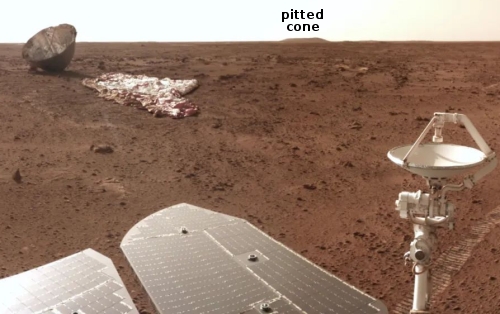Juno team creates dramatic animation of Ganymede/Jupiter fly-by
Using images from Juno’s fly-by of both Ganymede and Jupiter on June 7th and 8th, the science team has produced a dramatic animation, with background music, showing that fly-by from the point of view of the spacecraft.
I have embedded it below the fold.
The 3:30-minute-long animation begins with Juno approaching Ganymede, passing within 645 miles (1,038 kilometers) of the surface at a relative velocity of 41,600 mph (67,000 kph). The imagery shows several of the moon’s dark and light regions (darker regions are believed to result from ice sublimating into the surrounding vacuum, leaving behind darkened residue) as well as the crater Tros, which is among the largest and brightest crater scars on Ganymede.
It takes just 14 hours, 50 minutes for Juno to travel the 735,000 miles (1.18 million kilometers) between Ganymede and Jupiter, and the viewer is transported to within just 2,100 miles (3,400 kilometers) above Jupiter’s spectacular cloud tops. By that point, Jupiter’s powerful gravity has accelerated the spacecraft to almost 130,000 mph (210,000 kph) relative to the planet.
Among the Jovian atmospheric features that can be seen are the circumpolar cyclones at the north pole and five of the gas giant’s “string of pearls” – eight massive storms rotating counterclockwise in the southern hemisphere that appear as white ovals. Using information that Juno has learned from studying Jupiter’s atmosphere, the animation team simulated lightning one might see as we pass over Jupiter’s giant thunderstorms.
The lightning shown on Jupiter, while entertaining, is a complete fantasy. The flashes are much too bright and large. At the scale created, some would cover the Earth. In reality, that lightning wouldn’t be visible until you are very very close, and even then probably difficult to spot in the vastness of Jupiter.
Using images from Juno’s fly-by of both Ganymede and Jupiter on June 7th and 8th, the science team has produced a dramatic animation, with background music, showing that fly-by from the point of view of the spacecraft.
I have embedded it below the fold.
The 3:30-minute-long animation begins with Juno approaching Ganymede, passing within 645 miles (1,038 kilometers) of the surface at a relative velocity of 41,600 mph (67,000 kph). The imagery shows several of the moon’s dark and light regions (darker regions are believed to result from ice sublimating into the surrounding vacuum, leaving behind darkened residue) as well as the crater Tros, which is among the largest and brightest crater scars on Ganymede.
It takes just 14 hours, 50 minutes for Juno to travel the 735,000 miles (1.18 million kilometers) between Ganymede and Jupiter, and the viewer is transported to within just 2,100 miles (3,400 kilometers) above Jupiter’s spectacular cloud tops. By that point, Jupiter’s powerful gravity has accelerated the spacecraft to almost 130,000 mph (210,000 kph) relative to the planet.
Among the Jovian atmospheric features that can be seen are the circumpolar cyclones at the north pole and five of the gas giant’s “string of pearls” – eight massive storms rotating counterclockwise in the southern hemisphere that appear as white ovals. Using information that Juno has learned from studying Jupiter’s atmosphere, the animation team simulated lightning one might see as we pass over Jupiter’s giant thunderstorms.
The lightning shown on Jupiter, while entertaining, is a complete fantasy. The flashes are much too bright and large. At the scale created, some would cover the Earth. In reality, that lightning wouldn’t be visible until you are very very close, and even then probably difficult to spot in the vastness of Jupiter.










